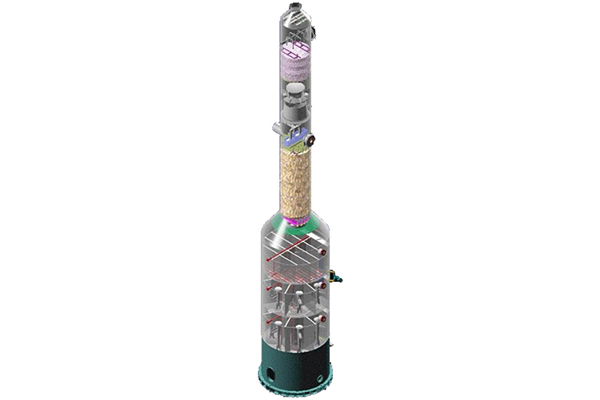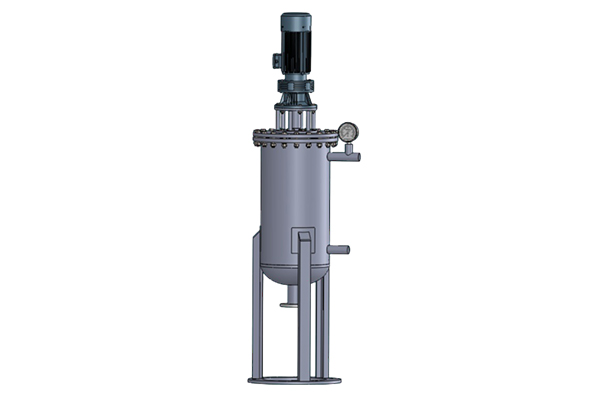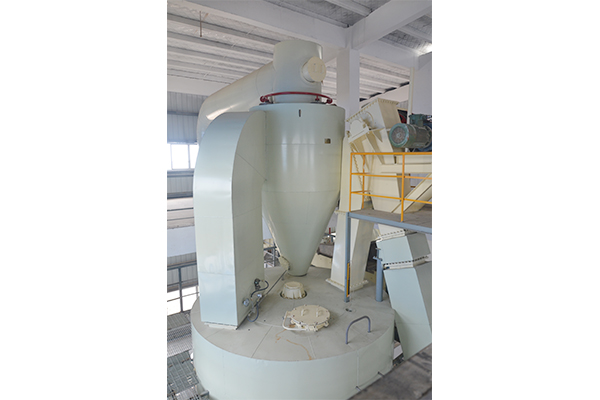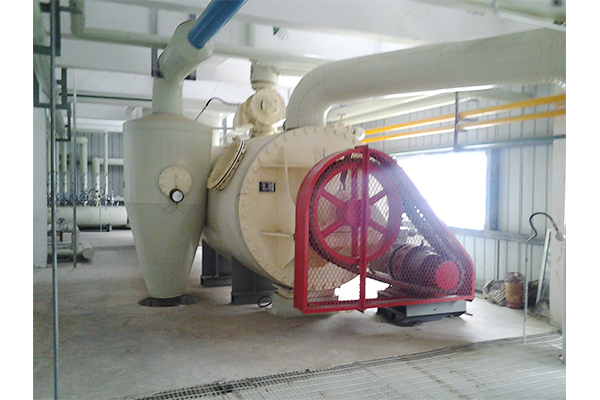How does a wet collector use chemical absorption to remove specific contaminants, thereby improving the purity of the final product?
Release Time : 2025-08-13
In industries such as chemical, food, and pharmaceuticals, which place extremely high demands on the production environment and product purity, particulate matter and harmful gaseous pollutants entrained in the gas not only affect process stability but can also directly contaminate the final product, reducing quality and even causing entire batches to be scrapped. As a highly efficient gas-solid and gas-liquid separation device, a wet collector has long surpassed the capabilities of traditional "spray dust removal." By integrating chemical absorption technology, it achieves targeted removal of specific contaminants, becoming a key component in ensuring high-purity production.
In practical applications, many industrial exhaust streams contain not only dust or liquid droplets, but also acidic gases, alkaline vapors, organic volatiles, and toxic gases. These pollutants are difficult to completely remove through physical interception alone. However, a wet collector adds specific chemical reagents to the spray liquid, causing them to react selectively with the target pollutants, achieving efficient and precise purification.
For example, in the treatment of chlorination reaction exhaust in the chemical industry, a mixture of hydrogen chloride and trace amounts of chlorine is often produced during the reaction. Direct discharge not only corrodes equipment but also pollutes the environment. Reuse or subsequent processing can affect catalyst activity or introduce impurities. In this case, a wet collector can be configured with an alkaline absorption liquid (such as sodium hydroxide solution) for multi-stage countercurrent spraying. HCl gas rapidly neutralizes with the NaOH to produce sodium chloride and water. Under alkaline conditions, Cl₂ undergoes a disproportionate reaction to produce sodium hypochlorite and sodium chloride, both of which dissolve in water and are effectively removed. The HCl concentration in the treated gas can be reduced to below 1 ppm, significantly improving the safety and compliance of subsequent gas reuse or discharge.
The volatilization of organic solvents is a common issue in the production of food additives or flavors and fragrances. For example, if vapors of ethanol, acetone, or esters mix with drying or reaction exhaust, not only does this waste raw materials but can also compromise product flavor purity. A wet collector selectively absorbs the organic or aqueous solvent phase, capturing target VOCs from the airstream. For example, low-temperature water spraying can efficiently condense and dissolve ethanol vapor. For water-insoluble organic compounds, surfactants or specialized absorbents can be introduced to enhance dissolution. By precisely controlling the composition, temperature, and circulation flow rate of the absorbent, highly selective removal of specific organic compounds can be achieved, avoiding cross-contamination and ensuring the naturalness and purity of the final product.
Furthermore, in the production of certain high-value-added products, wet collectors also play a critical role in protecting catalysts or preventing side reactions. For example, in hydrogenation reactions, trace amounts of sulfur compounds (such as H₂S) in the feed gas can permanently poison precious metal catalysts. Using an absorbent containing zinc or copper ions in the wet collector can cause H₂S to precipitate as insoluble metal sulfides, thus completely removing the poison before the gas enters the reactor, ensuring catalytic efficiency and product consistency.
Furthermore, modern wet collectors are often integrated with online pH monitoring, conductivity feedback, and automated dosing systems to dynamically adjust the absorbent concentration. When an elevated pollutant load is detected, the system automatically replenishes fresh absorbent to ensure continued efficient reaction performance. This intelligent control not only improves removal efficiency but also avoids reagent waste and reduces operating costs.
In summary, by incorporating a chemical absorption mechanism, the wet collector has evolved from a simple physical separation device into an intelligent purification system with chemical reaction capabilities. It not only efficiently removes traditional particulate matter but also precisely targets and removes key gaseous pollutants that affect product purity. In modern industry, where cleanliness requirements are increasingly stringent, this "chemical + physical" synergistic purification model is becoming a crucial technical approach for improving product quality, ensuring process stability, and achieving green production.
In practical applications, many industrial exhaust streams contain not only dust or liquid droplets, but also acidic gases, alkaline vapors, organic volatiles, and toxic gases. These pollutants are difficult to completely remove through physical interception alone. However, a wet collector adds specific chemical reagents to the spray liquid, causing them to react selectively with the target pollutants, achieving efficient and precise purification.
For example, in the treatment of chlorination reaction exhaust in the chemical industry, a mixture of hydrogen chloride and trace amounts of chlorine is often produced during the reaction. Direct discharge not only corrodes equipment but also pollutes the environment. Reuse or subsequent processing can affect catalyst activity or introduce impurities. In this case, a wet collector can be configured with an alkaline absorption liquid (such as sodium hydroxide solution) for multi-stage countercurrent spraying. HCl gas rapidly neutralizes with the NaOH to produce sodium chloride and water. Under alkaline conditions, Cl₂ undergoes a disproportionate reaction to produce sodium hypochlorite and sodium chloride, both of which dissolve in water and are effectively removed. The HCl concentration in the treated gas can be reduced to below 1 ppm, significantly improving the safety and compliance of subsequent gas reuse or discharge.
The volatilization of organic solvents is a common issue in the production of food additives or flavors and fragrances. For example, if vapors of ethanol, acetone, or esters mix with drying or reaction exhaust, not only does this waste raw materials but can also compromise product flavor purity. A wet collector selectively absorbs the organic or aqueous solvent phase, capturing target VOCs from the airstream. For example, low-temperature water spraying can efficiently condense and dissolve ethanol vapor. For water-insoluble organic compounds, surfactants or specialized absorbents can be introduced to enhance dissolution. By precisely controlling the composition, temperature, and circulation flow rate of the absorbent, highly selective removal of specific organic compounds can be achieved, avoiding cross-contamination and ensuring the naturalness and purity of the final product.
Furthermore, in the production of certain high-value-added products, wet collectors also play a critical role in protecting catalysts or preventing side reactions. For example, in hydrogenation reactions, trace amounts of sulfur compounds (such as H₂S) in the feed gas can permanently poison precious metal catalysts. Using an absorbent containing zinc or copper ions in the wet collector can cause H₂S to precipitate as insoluble metal sulfides, thus completely removing the poison before the gas enters the reactor, ensuring catalytic efficiency and product consistency.
Furthermore, modern wet collectors are often integrated with online pH monitoring, conductivity feedback, and automated dosing systems to dynamically adjust the absorbent concentration. When an elevated pollutant load is detected, the system automatically replenishes fresh absorbent to ensure continued efficient reaction performance. This intelligent control not only improves removal efficiency but also avoids reagent waste and reduces operating costs.
In summary, by incorporating a chemical absorption mechanism, the wet collector has evolved from a simple physical separation device into an intelligent purification system with chemical reaction capabilities. It not only efficiently removes traditional particulate matter but also precisely targets and removes key gaseous pollutants that affect product purity. In modern industry, where cleanliness requirements are increasingly stringent, this "chemical + physical" synergistic purification model is becoming a crucial technical approach for improving product quality, ensuring process stability, and achieving green production.








